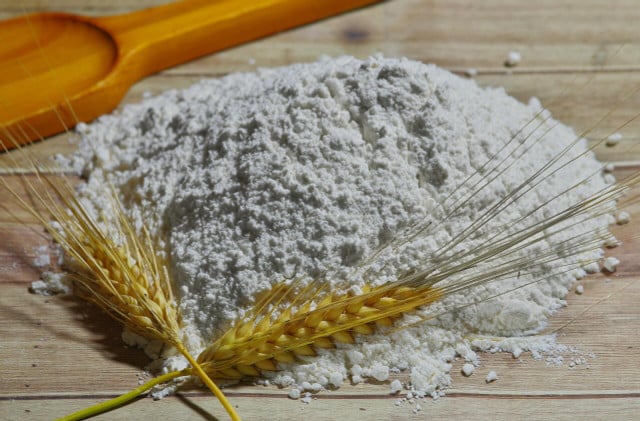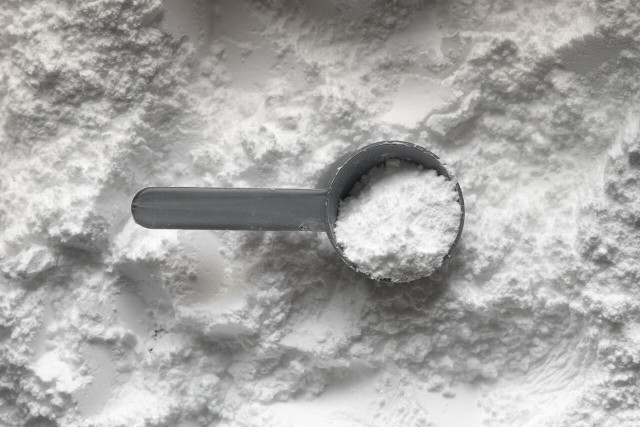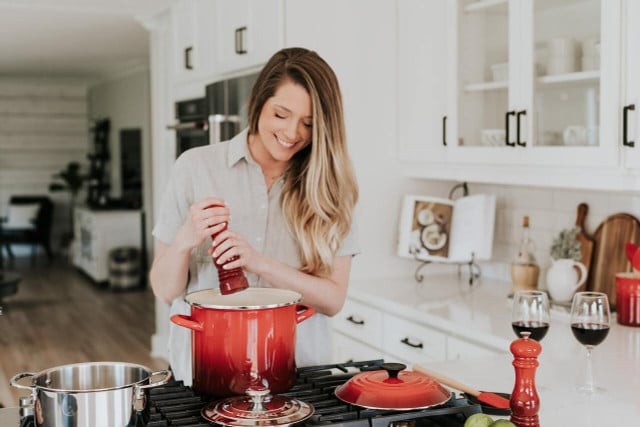Don’t know how to thicken stew? Thicker, heartier and more filling than soup, your stew can sometimes turn out thin. Luckily, that’s a problem you can fix. Read on to find out how.
Whether you’re a seasoned pro in the kitchen or new to cooking altogether, sometimes things don’t go according to plan. If you’ve been dreaming about a thick and hearty stew but find yours is on the watery side, don’t panic. Here are different methods on how to thicken your stew.
How to Thicken Stew With Flour

Flour is the most traditional way of thickening stews, and it can be used in a few different ways to achieve results.
1. For meat stews: For non-vegetarian stew, add the flour when you sear the meat. Not only will this take care of any raw flour taste, but it will also add a delicious crust to the meat, which helps to lock in flavors.
Tip: If you’re using meat, choose organic flour whenever possible to help support the environment. Even better if you can get organic meat from a local butcher or farmer.
2. Making a roux: A roux is a mixture of equal parts fat and flour whisked together to make a sort of paste. You can use butter, oil or margarine to adapt it to any dietary restrictions.
3. Whisk in a slurry: Another common way to use flour to thicken a stew is by whisking in a flour slurry. You can make one by combining equal parts flour and water and stir until it’s thoroughly combined. Then slowly whisk into your stew.
Also interesting: Is Flour Vegan? Tips for Cruelty-Free Baking
4. Using Cornstarch to Thicken Stew



Cornstarch is a gluten-free alternative to flour and can be quite effective in thickening up stews and sauces. But you have to be careful, cornstarch can get quite lumpy if added incorrectly. The best way to utilize cornstarch is by mixing it into a slurry and adding it to the stew at the end of cooking.
Here’s how to make and use a cornstarch slurry:
- Measure out 1 tbsp of cornstarch for every cup of liquid you want to thicken, and place it in a small bowl.
- Add an equal amount of cold water and stir until a smooth paste forms — this is your slurry.
- Make sure your stew is at a simmer on the stove, and then whisk your slurry in. It helps to add it in slowly so you don’t put too much in.
- Bring to a boil and cook until the starchy taste is gone.
Tip: If your stew is tomato-based, consider using arrowroot powder instead. The acidity in tomatoes can take away some of the effectiveness of cornstarch.
5. Thicken Stew by Simmering



If you find yourself with too much liquid in the pot, you can try and reduce it by removing the lid and keeping your stew at a gentle simmer until the desired consistency is reached. Be careful when using this method, as it can overcook some of the elements in your stew and concentrate the flavors. If you want to play it safe, remove any meat or vegetables first and place them off to the side.
Tip: If you find that your stew has become too salty after reducing it, read on: How to Make Food Less Salty
6. Using a Stick Blender
Depending on the type of stew you’re cooking, another easy method to help thicken it up is by using a stick blender. If you’re making a vegetable stew, like with a homemade scafata recipe, for example, you can use a stick blender to purée some of the vegetables in it. This will help to make a heartier base.
Tip: Ladle out the meat before blending for stews with meat in them.
7. Tips for Your Slow Cooker to Thicken Stew



Slow cookers are a wonderful invention and make cooking stews easy. However, there are some downsides:
- Slow cookers trap moisture inside and don’t allow liquid to evaporate.
- They also operate at low and slow heat, so many thickening starches won’t get hot enough to activate.
If you end up with a slightly runny slow cooker stew, try out the following tricks to thicken it:
- Prop the lid of your slow cooker with a wooden spoon to allow some moisture to evaporate.
- Purée some of the stew directly in the slow cooker.
- Pour off the liquid into a small saucepan and heat it on the stove. Then whisk in a slurry to help thicken your stew.
Read more:
- What to Do With Leftover Rice: 3 Simple Recipes
- 10 Everyday Green Living Ideas: Sustainability on a Shoestring Budget
- Konjac Flour: Uses and Regional Alternatives
Do you like this post?






